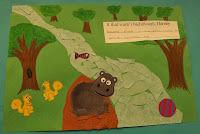This lesson was a printmaking lesson focused on Pop Art. In
this lesson I first taught about what pop art was and Andy Warhol’s contributions
to Pop Art. We learned about color, pattern, balance and unity in Pop art and
how it affects the way we see art. The lesson focused on how Pop Art takes everyday
items and makes them extraordinary and also focused on the way Pop Art questions people description of art. We also covered the basic vocabulary
of printmaking and how to do it. The project was to make a combination of four
of the same print with different colors using a common logo or object they see
everyday life as their design. They were supposed to include elements of color,
pattern, balance and unity when creating their design.
A possible extension activity for this project would be to
explore our ideas of art, I would bring in many everyday objects along with
some paintings. I would then have the students separate the items into art and
not art then we would discuss why we found some items to be art while the other
considered just an everyday object. We would then discuss the elements of art
we see in the everyday object that could make it be considered art and how art
is used in everyday life.








